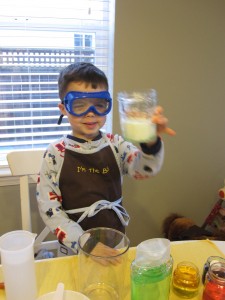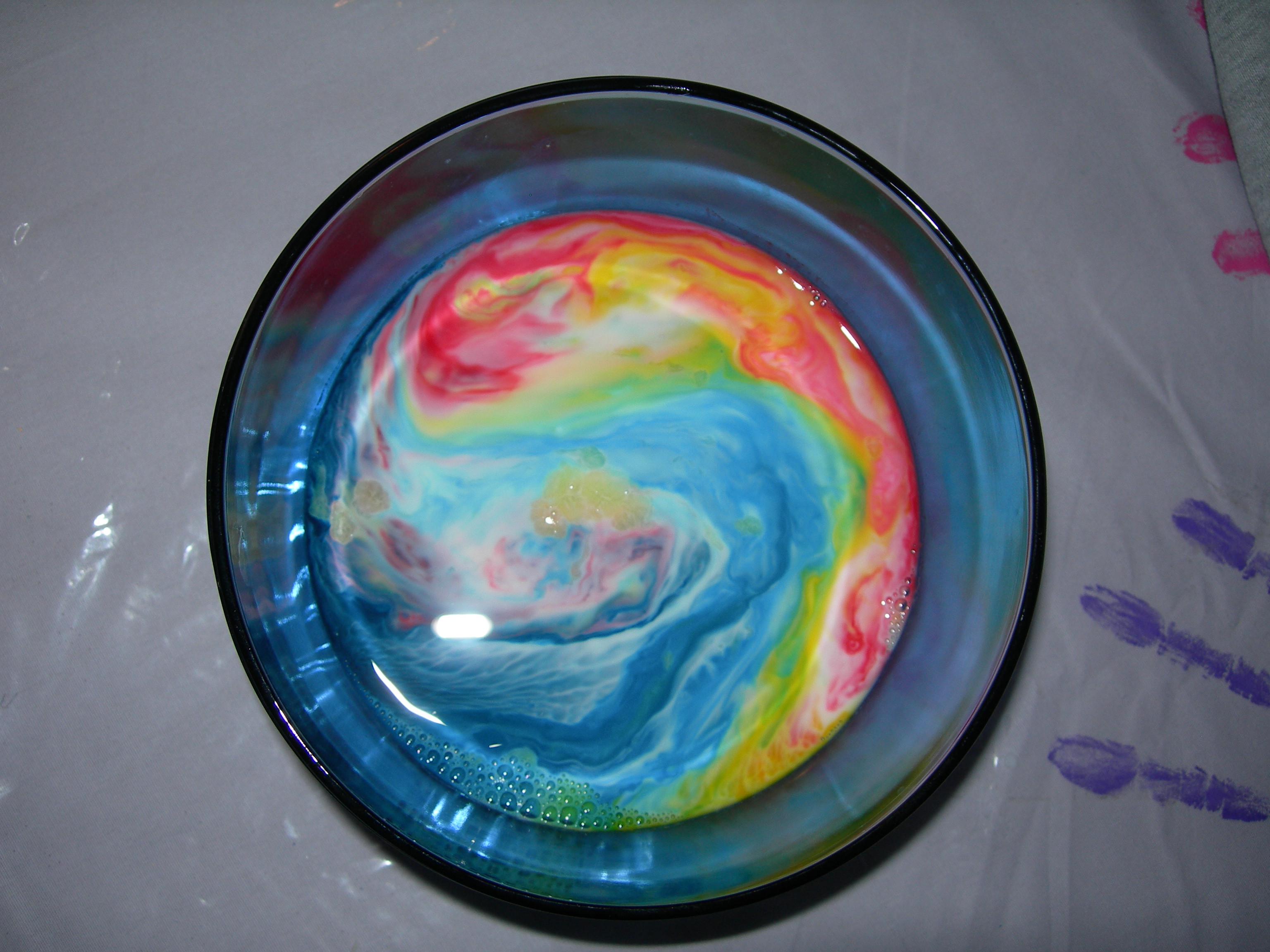First I gave him a small cup of treasures to put into the bottle (fine motor skills at work!)
Then we added water. I helped to hold the funnel steady, but I let him do the pouring (independence skills).
He made sure he got every drop! We added a bit more water until the bottle was about 3/4 full.
Then my son added the food coloring. He chose blue, which was unplanned perfection. The blue water + yellow oil= green (or teal in our case)!
Next my son poured the oil into the bottle.
He could clearly see the oil and water layering rather then mixing.
We hot glued the lid.
Let the mixing begin!
The oil makes a lava lamp-type effect if you shake it gently and the treasures swirl about.
Shake it harder and the oil and water mix. The color changes as well. Ours is more teal then green due to the amount of blue dye in the water.
Grandma and Grandpa were visiting so we had more people to share our experiment with!
The oil makes a lava lamp-type effect if you shake it gently and the treasures swirl about.
Shake it harder and the oil and water mix. The color changes as well. Ours is more teal then green due to the amount of blue dye in the water.
Grandma and Grandpa were visiting so we had more people to share our experiment with!
Additional Sensory Bottle Ideas:
- Activity and Sensory Bottles for Young Children: Child Care Lounge (extensive list!)
- Rainbow Play and Getting Out of the Way... Teach Preschool
- Kids Crafts Sensory Bottles: www.Quality-Kids-Crafts.com










































